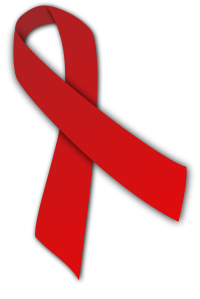
Photo from wikipedia
Combined HIV antiretroviral therapy (cART) has been effective except if drug resistance emerges. As cART has been rolled out in low-income countries, drug resistance has emerged at higher rates than… Click to show full abstract
Combined HIV antiretroviral therapy (cART) has been effective except if drug resistance emerges. As cART has been rolled out in low-income countries, drug resistance has emerged at higher rates than observed in high income countries due to factors including initial use of these less tolerated cART regimens, intermittent disruptions in drug supply, and insufficient treatment monitoring. These socioeconomic factors impacting drug resistance are compounded by viral mechanistic differences by divergent HIV-1 non-B subtypes compared to HIV-1 subtype B that largely infects the high-income countries (just 10% of 37 million infected). This review compares the inhibition and resistance of diverse HIV-1 subtypes and strains to the various approved drugs as well as novel inhibitors in clinical trials. Initial sequence variations and differences in replicative fitness between HIV-1 subtypes pushes strains through different fitness landscapes to escape from drug selective pressure. The discussions here provide insight to patient care givers and policy makers on how best to use currently approved ART options and reduce the emergence of drug resistance in ∼33 million individuals infected with HIV-1 subtype A, C, D, G, and recombinants forms. Unfortunately, over 98% of the literature on cART resistance relates to HIV-1 subtype B.
Journal Title: FEMS microbiology reviews
Year Published: 2022
Link to full text (if available)
Share on Social Media: Sign Up to like & get
recommendations!